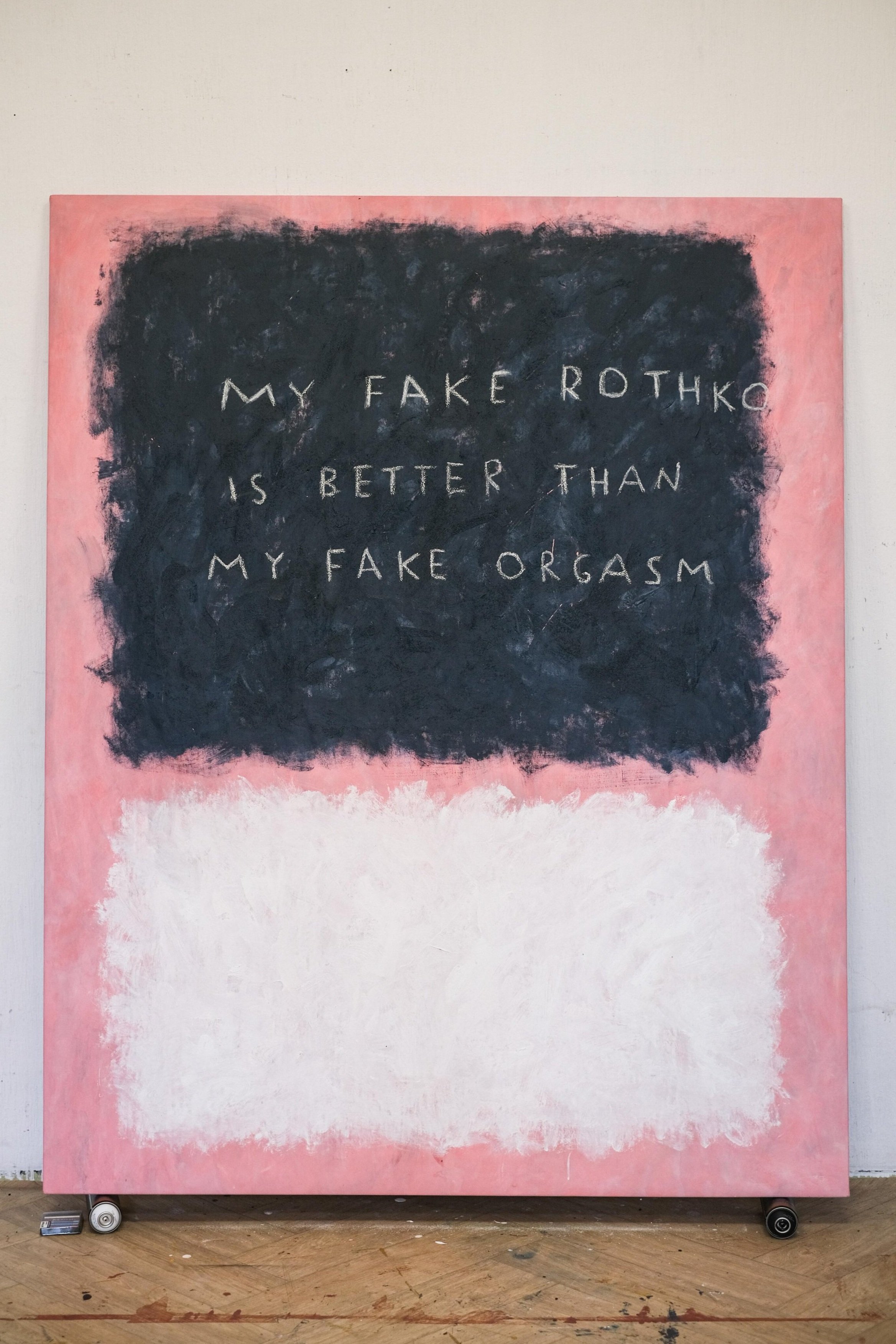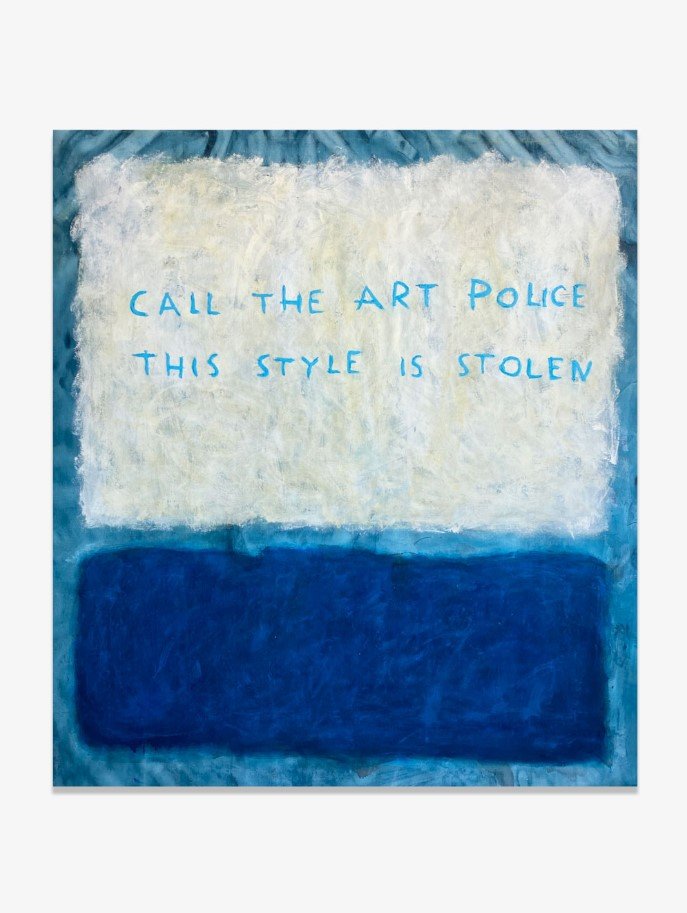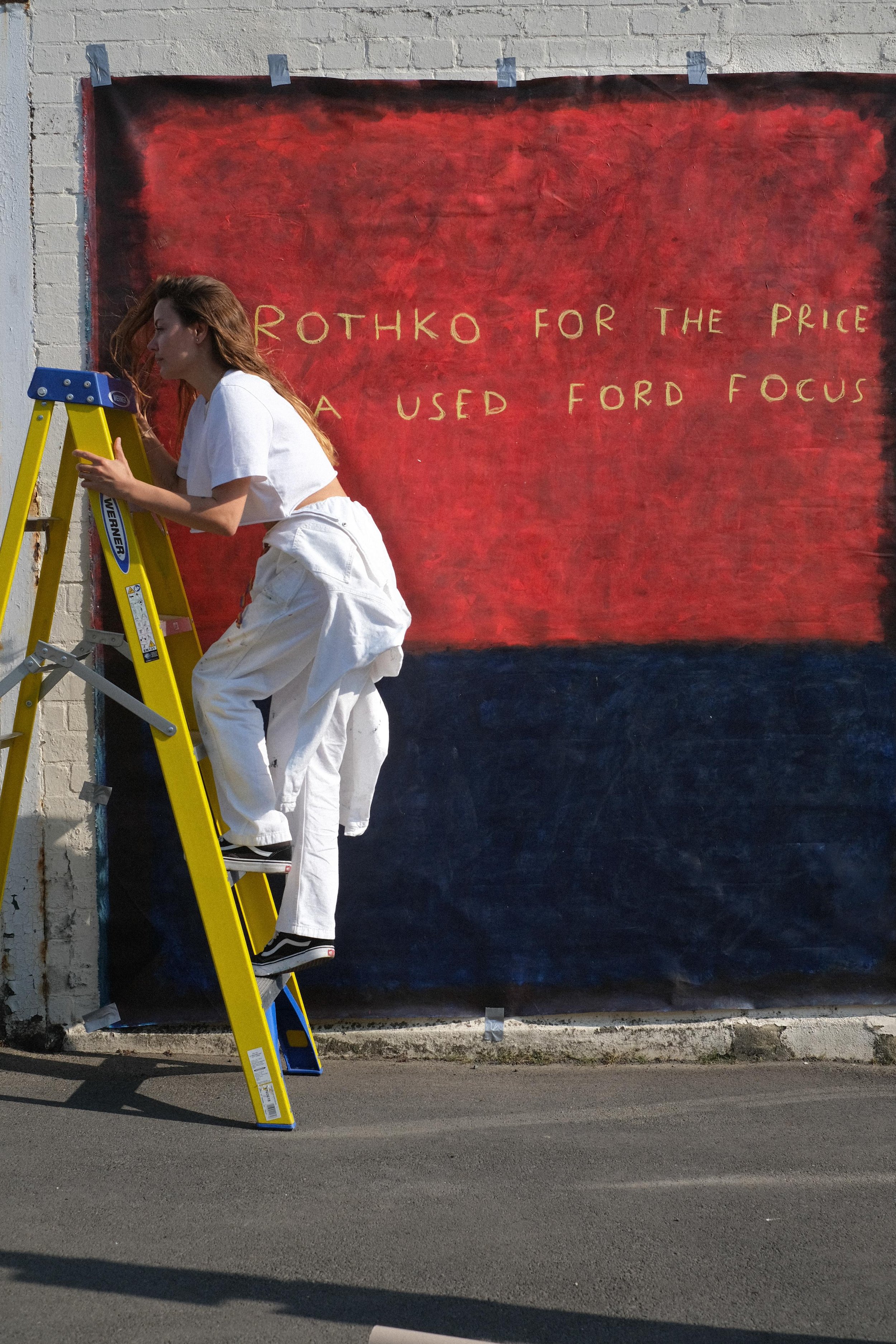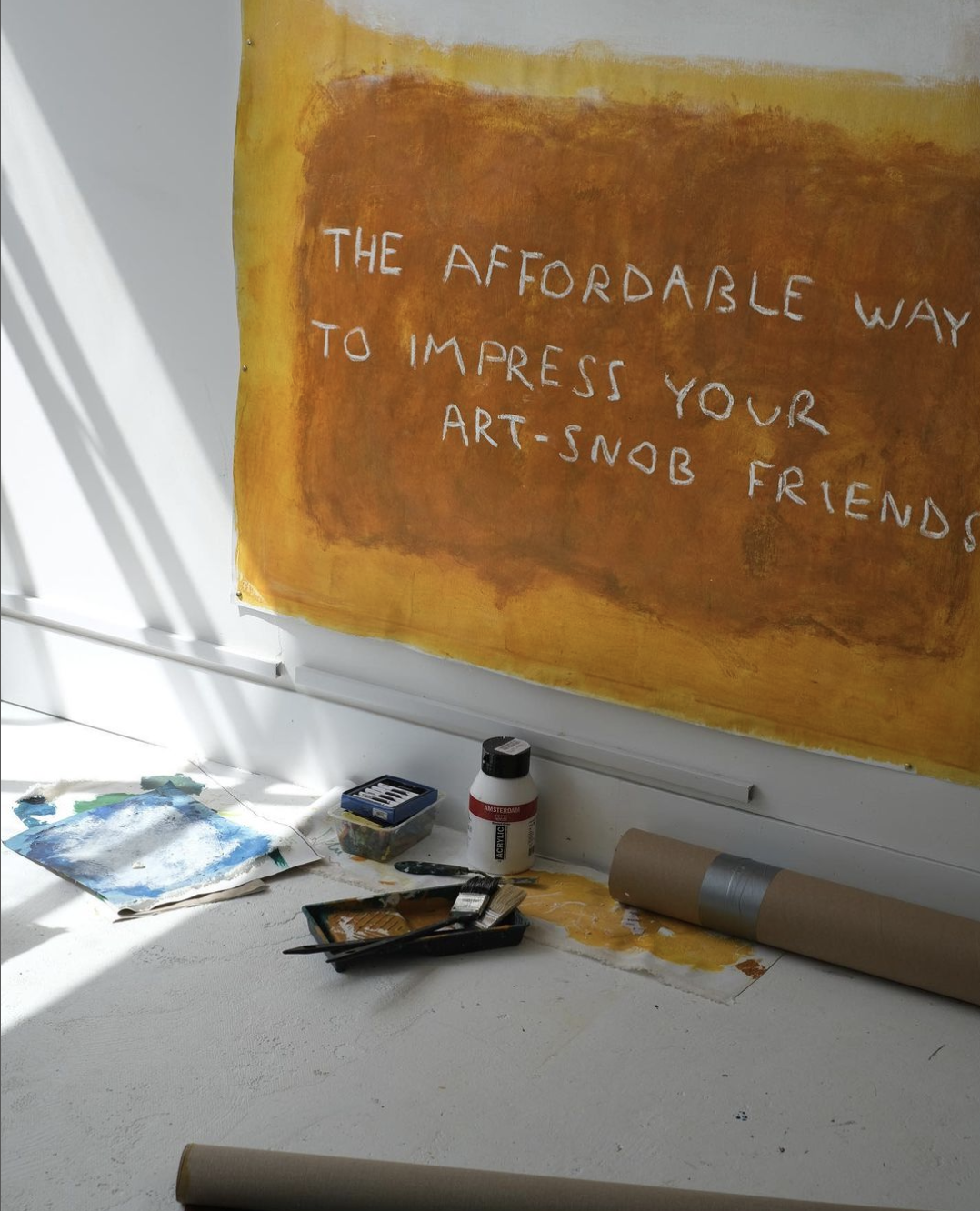Unmasking Fake Rothko
Exploring Alexa Agienko’s provocative reflections in contemporary culture.
Welcome to the world of an emerging artist. Alexa Agienko, whose passion lies in traditional painting and contemporary art. Born in Slavutych, Ukraine, Alexa’s artistic journey has taken her on a path of photography and media art before returning to her first love, paintings.
In her works, Alexa reimagines the essence of 20th-century contemporary art, infusing it with the modern cultural characteristics that define our society. With a keen focus on the cult of consumption and the pursuit of status, her creations resonate with a deep satirical tone. One of her most notable series titled “Fake Rothko” challenges us to question the role of art in a world dominated by consumerism and the relentless pursuit of social standing. Through her compositions, Alexa provokes contemplation and conversations around the intrinsic value of art and the ever-changing dynamics of our materialistic society.
Currently based between the vibrant cities of Kyiv and London, Alexa draws inspiration from the diverse art scenes surrounding her. The fusion of cultures and artistic influences seep into her creations, giving them a unique flavor that captivates. As Alexa embarks on this exciting journey, she eagerly looks forward to sharing he artistic evolution with us.
Photo: Courtesy of @alexa_agienko.
Karen Santos: How has being raised in Slavutych, Ukraine, and living in London shaped the way you relate to art?
Alexa Agienko: I was born and raised in Slavutych, a small town in northern Ukraine founded in 1986 after the Chornobyl disaster. The majority of the adult population in our town worked at the power plant. Since our city was very young, it had a lot of different activities and creative places for children, such as art schools, theaters, sports clubs, and more, which occupied almost all of our free time as kids, including mine. At that time, I already loved drawing, but it was just a childhood hobby because most of my free time was occupied by gymnastics. When I was four years old, my parents enrolled me in a gymnastics club, where I spent twelve years and became a master of sports. It greatly influenced me in terms of discipline and achieving set goals, and I am very grateful for that experience and development in my Slavutych. However, I still believe that it is not the city that shapes a person but the impressions they received in childhood.
My introduction to London happened approximately ten years ago as part of language courses, and honestly, London didn't impress me at all at that time. By that point, I had visited many cities and metropolises, and London was not on my list of top cities where I would want to live and work. But after ten years, fate brought me back to the capital of the United Kingdom, and I fell in love with this city. I think it was during this interval that I delved into art, creativity, exhibitions, and other art events that fill London. This rhythm, vibe, and art infrastructure cannot help but inspire you if you are open to new stages in your creative career.
KS: Tell us more about the routine or daily practices that help you boost your creativity and be inspired.
AA: I believe the second most significant expression of my creativity is my camera, which is always with me in my bag or my hands. I love walking around the city and noticing the beauty that surrounds me – people, nature, architecture. I enjoy photographing elderly couples, and children; it's how I relax and simultaneously get inspired for productive weekdays in my studio. Besides the camera, I have another love, my Harley-Davidson. This companion always improves my mood and helps me feel alive. And, of course, music. It's hard to imagine all of this without the right track matching my mood in my headphones.
KS: What does rebellion mean to you as an artist? Would you call yourself a rebel?
AA: Rebellion as an end in itself has never been my goal. I simply do what I love, what is relevant at the moment, as it seems to me. Perhaps the abstract artists of the 20th century could say the same about themselves. Maybe there are some rebellious traits in me, but most likely not. I cannot label myself as such. At the very least, some time must pass, and we will see what it has influenced and grown into. For now, these labels sound too loud, in my opinion.
KS: Being a professional artist also involves receiving criticism, which can be as constructive as it can be negative. How have you dealt with this aspect?
AA: I believe that in the modern world, there is no longer a concept of a professional artist. The boundaries have become very blurred, and it is challenging to assess the level of professionalism unless you are Jerry Saltz. Criticism has become an integral part of my art, and I like it. My works evoke emotions in viewers, which means it is no longer dull art. Negative criticism has never elicited a negative response from me because I create my work consciously, knowing what and why I am doing it. If a viewer wants to express their accumulated negativity by commenting on my work, they are welcome to do so. Everyone has the right to do what they deem necessary; that is freedom. I also occasionally receive constructive criticism, but usually, it comes from people close to me, for which I am always grateful.
Video: Courtesy of @alexa_agienko.
KS: The use of color is an element that strongly characterizes your work. Which palette represents your personality?
AA: I consider myself a highly emotional person, so there is no constant palette for me. I am different every day. Yesterday, I could be all shades of green, and today I want to be dusty pink. It's fun! And, of course, my work begins with my mood. It influences my choice in the Mark Rothko catalog, and it also affects the technique of execution, which can vary because I am not trying to create an exact reproduction but merely a resemblance.
KS: What can you tell us about the quotes that we find in your paintings?
AA: The text on my paintings is exactly what gives them new meanings and provides topics for discussion. More often than not, it is irony/post-irony that reflects or satirizes the current reality. Each such text also has its mood, which should correspond to the palette of the painting to maximize the viewer's attention.
Photos: Courtesy of @alexa_agienko.
KS: Why Rothko?
AA: I have always enjoyed abstract art, especially the mid-20th century movement with artists like De Kooning, Pollock, Mitchell, Frankenthaler, Kline, Twombly, and of course, Rothko. I believe Rothko is the most adaptable for the ideas/thoughts I want to convey.
I am often asked if there will be, for example, a series called "Fake Clyfford Still." It's difficult for me to answer that right now, perhaps... Currently, I still have a large collection of Rothko's works.
KS: Rothko believed that ego, or allusions to the artist’s biography and role in society, only distracted from art’s true power to provoke “pure human reactions.” What do you think about this statement?
AA: I can agree with that. If we go back to criticism, specifically negative comments, often my appearance or image becomes part of the discussion. This is the very distraction from the essence of the painting, the message it carries. On the other hand, a modern artist cannot exist without an image, an open biography, etc. Therefore, it is an integral part of the viewer who looks at the artwork in conjunction with the artist's persona.
Photos: Courtesy of @alexa_agienko.
KS: How can we see your lifestyle portrayed through your work?
AA: Perhaps courage and confidence in what I do in my life are somehow noticeable in my work. It's hard to say; I think it's better to leave that judgment to the viewer.
KS: What does “the art of living” truly mean to you?
AA: To trust me and my emotions. To create. To notice the beauty around me. To fill my life with joy, even when it's challenging.





